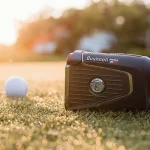In the last decade, the clothes athletes wear have changed from grab anything out of the closet utilitarian fashion, to carefully considered pieces of technical equipment. Cotton race-logoed T-shirts have been replaced with technical wicking fabrics that move sweat produced during a hard workout away from your body. Feather-light jackets carried in fanny packs offer respite from a brisk wind and, when the temperature turns cold, waterproof breathable shells keep you comfortable during high intensity aerobic activities.
Recently, the familiar black tights worn by runners, cyclists and cross country skiers have seen dramatic innovations in construction and application, as well as a growing increase in popularity. Two years ago, Jackson Hole Sports ski shop in Teton Village, WY, saw about $4,000 a year in compression sales, says retail operational manager Larry Hartenstein. Last year, after the addition of more high-end compression apparel, the shop saw $33,000 in compression sales.
This “compression apparel” was originally marketed to football players by Under Armour. Now the specialized base layers, tops, shorts, tights and socks are offered by brands like Nike, Adidas, Craft, Pearl Izumi, Salomon, Skins, Salomon, CW-X and more. This vast range of brand options is another example of rising consumer interest; an interest many companies attribute to Under Armours effective and educational compression marketing campaign.
“Under Amour has definitely been pushing the compression apparel business through their pro sports team development and the way theyve been marketing the product,” says Salomon softgoods associate Eric Miesch. Agrees Hartenstein, “I really think that Under Armours amazing marketing scheme has been able to push out through the NFL and the public is seeing [compression technology.]”
Other companies claim that the interest is just the natural result of an aging consumer. “All the advertising and public awareness campaigns of the last decade or so are finally grabbing hold” remarks Opedix spokesperson Alli Noland. “Baby boomers are sensing their mortality on some level and are encouraged to get healthy, whether it be through some compression garment or [some other way.]” Barry Levinson, director at Ski Racing Development, observes that top downhill ski racers have begun to wear compression apparel and the trend has spread to the fans.
As the name proclaims, the compression apparel fits tight against the body. Even a long-time user of running or cycling tights will notice the snug body-shaping fit. Marketers of compression technology claim their apparel can prevent injuries, speed recovery and improve circulation.
In laymans terms, compression apparel works by applying pressure to the major muscle groups. The tight weave of the fabric, and the shape and pattern of the panels, compress major muscle groups. The result is increased blood flow during training and racing. Since the higher blood flow carries more oxygen to your muscles, lactic acid is moved out of your system quicker, preventing fatigue and speeding recovery time. Less fatigue allows you to maintain proper form and potentially avoid injuries.
Compression apparel also helps maintain consistent body temperature. Many new products incorporate technology to moderate wearers body temperature, support their joints and even improve their posture.
Every athlete, even a weekend warrior, appreciates a tool that can improve performance or prevent injuries. This season, compression technology can be found in tops, tights and socks appropriate for skiers.
SALOMON
Salomons Exo Sensifit technology is made of a breathable, micro-porous film designed to enhance and improve blood oxygenation and muscle recovery through targeted compression. The Exo II Tight covers 70 percent of the leg muscle area involved in running biomechanics. It reduces muscle deformation and energy loss by 20 percent. Miesch says the Exo Sensifit fabric gives the wearer the “best of both worlds” by providing both breathability and muscle support. www.salomonsports.com
The company markets much of their product to trail runners, updating its apparel with these runners specific needs in mind. “Were looking at a stronger seam quality and extra detail [on pants],” says Meisch. “When youre running on a trail you brush up against stuff.”
SKINS
Developed in Australia in 1996, Skins is body-molded gradient compression performance equipment with built-in BioAcceleration technology. When compression is engineered to apply a balanced and accurate surface pressure over specific body parts, it triggers an acceleration of blood flow.
Skins garments have engineered gradient compression designed and cut to hold muscles against the skeletal frame, and feature distinctive muscle wrapping seams. These seams assist to ensure compression levels in the garments panels and support muscle groups through the full range of movement, further increasing power and endurance, and reducing injury. www.skins.net.
CW-X
CW-X brand apparel applies the principles of kinesiology the study of human movement to create a line of athletic wear that functions in concert with the body. The VersatX Web Top incorporates an upper body Conditioning Web support structure that specifically targets the trapezius muscles and scapular bones of the upper back. The structure assists in supporting posture and creating more controlled shoulder and arm motion, leading to more efficient movement. VersatX products are made from Dry-Zone fabric, which offers quick-dry moisture wicking and UPF 50+ UV protection through the use of titanium-oxide nanotechnology. Dry-Zone fabric also features anti-bacterial silver nano-composites and four-way stretch comfort.
President and CEO John L.A. Wilson explains the effectiveness of this kinesiology technology in CW-Xs products, “[The fabrics design is] based on a taping technique used by physiotherapies in Japan to support athletes when they need support. The Conditioning Web is really an exoskeleton web of support the webbing is anatomically positioned to provide targeted support to areas where you need it most.” www.cw-x.com.
OPEDIX
Opedix offers a different take by targeting a different consumer than most other companies. “What Opedix originally was tapping into was the aging, active person; trying to keep them active for longer,” says Noland. “It was created by baby boomer-era brothers with knee surgeries. The companys goal is to keep active people active for longer, supplementing their active pursuits and making them well.”
In that vein, Opedix has introduced Wellness Gear, a collection of wearable products that promotes healthy joint alignment, muscle development and strength.
Tested at the Steadman Hawkins Sports Medicine Foundation and Kerlan Jobe Orthopedic Clinic, Opedix offers products proven by scientific studies to improve joint alignment in the knees and shoulders, increasing stability and strength, “unloading” the joints, and reducing wear and tear.
The Opedix Knee Support System uses a patent-pending anchor and sling design to provide support to the outside of the knee. This reduces the amount of damaging outward movement and decreases the stresses or “load” on the knee joint. “Unloading” is the mechanical process by which stresses on the joint are reduced. It is an established strategy for reducing pain and increasing function, strength and stability of the knee. It also mitigates the progression of knee-related issues, including osteoarthritis. “Its subtle but [wearers] can feel a difference,” comments Noland. The system helps reduce the weight on wearers knees by 4 to 7 percent for every mile they run and every turn they take while skiing.
Additionally, the company will reveal its Posture shirt in January 2009. “Its like an invisible mom telling you to stand up straight,” remarks Noland. www.opedix.com
X-BIONIC
“Bionic means learn from nature; X-Bionic means to surpass it,” explains X-Bionic Brand Manager David Seligman. While many companies focus on moisture wicking to cool the wearers skin, X-Bionic instead has studied the bodys natural cooling system and developed products to aid in that process. The company says this reduces the amount of energy the body must spend regulating temperature during exercise.
“At rest, it takes around 70 percent of bodys energy to regulate temperature. [For] endurance athletes, it takes about 97 percent,” says Seligman. “While we do have technology that harnesses moisture to take advantage of evaporative cooling, we make sure theres a thin layer of sweat on the body to help with cooling. Conversely, that 3-D knit, when you come to a rest phase, will trap the bodys generated warm air, so it actually provides a cushion insulation so you dont overcool and shiver and waste energy that way.”
X-Bionics builds its new Ski Touring tops with three-dimensional, patent-pending, knitted honeycomb cushion padding on the shoulders and waist to protect from shoulder straps and waist belts on packs. Special padding found in all the tops provides air flow for sweat-sensitive areas, while cushioning and distributing pressure at the same time. www.x-socks.com














